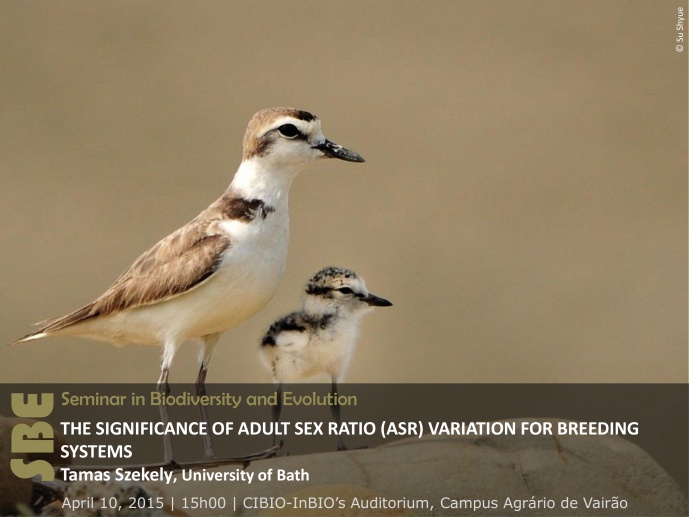THE SIGNIFICANCE OF ADULT SEX RATIO (ASR) VARIATION FOR BREEDING SYSTEMS


Adult sex ratio (ASR) varies widely in nature, ranging from populations that are heavily male-biased to ones composed only of adult females. Recent works are discovering the significance of this variation for social behaviour, demography and population fitness. I will focus on ASR variation in birds, and using examples from my groups work illustrate sex ratio variations in shorebirds and in birds general, and investigate the significance of these variations for breeding systems. Finally, I will mention ongoing works that target revealing the causes and implications of ASAR variation in wild populations.
Tamas Szekely is a Professor of Biodiversity at the University of Bath and his main research is focused on sexual selection, mating systems and parental care. He published over 200 peer reviewed research articles and book chapters, and 4 books, most recently on Social behaviour: genes, ecology and evolution (2010, Cambridge University Press). Most of his research focused on avian families. His research skills include phylogenetic analyses, experimental and observational analyses of behaviour in the natural populations, and theoretical modelling. Prof Szekely was a visiting professor at Harvard University, University of Groningen and Bielefeld University, and recently hold a Humboldt Award at the University of Goettingen.
[Group Leader: Paulo Gama Mota, Behavioural Ecology]
Image: Male Kentish plover looking after a chick (image credits: Su Shyue)